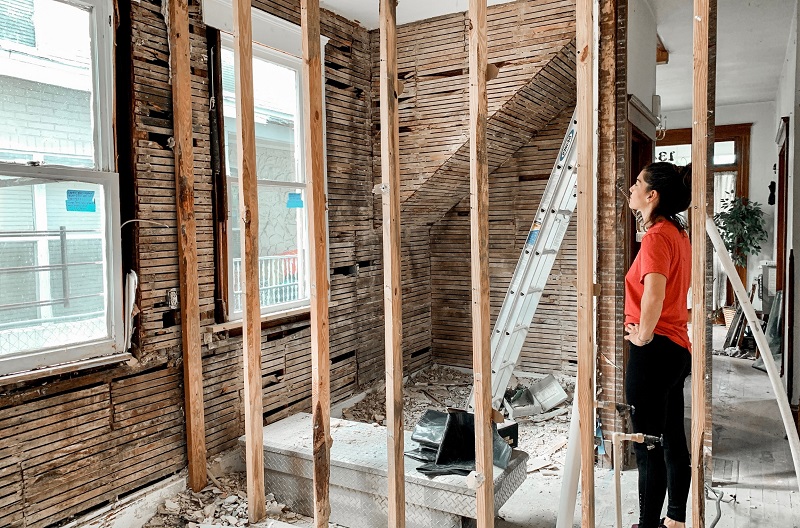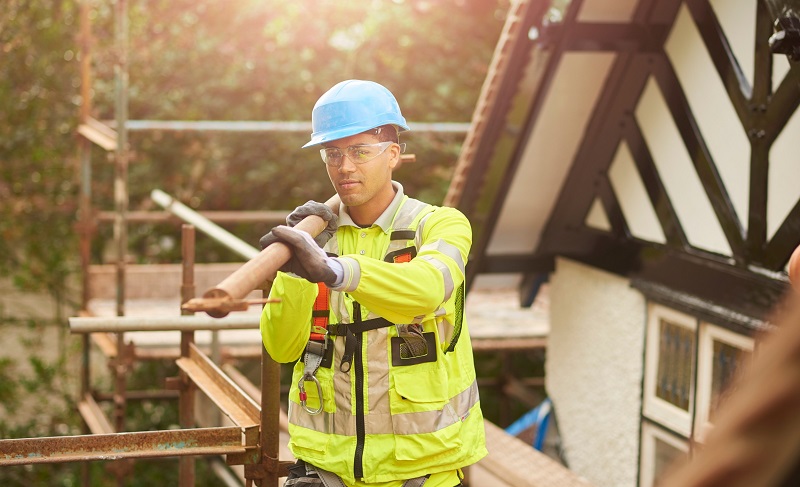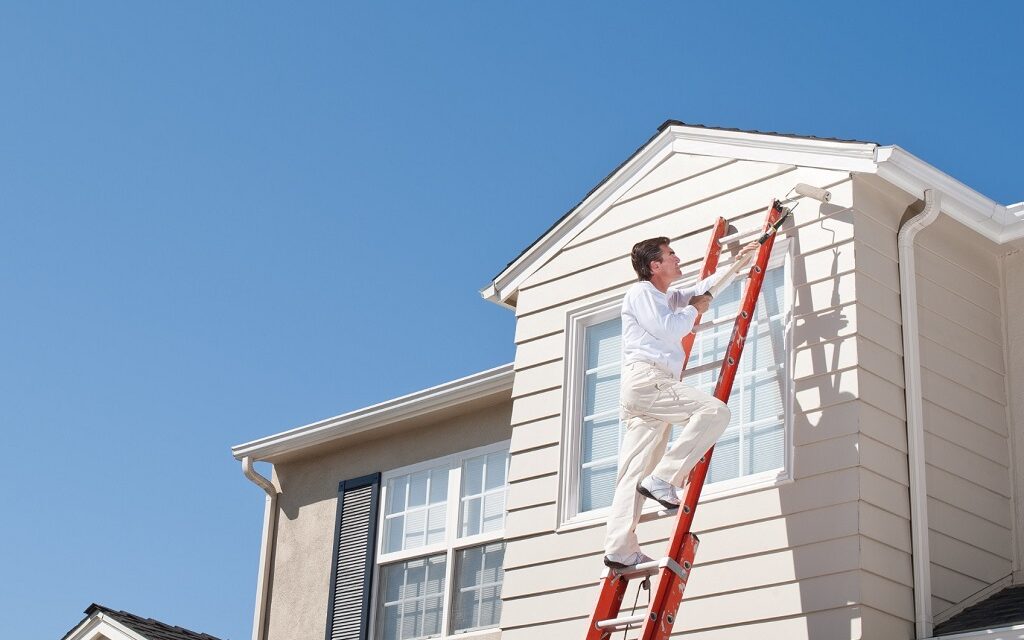Many homeowners make the false assumption that they cannot be held liable for injuries that result during a construction project on their property. This is not always true, even in the case where they hire a contractor who is fully licensed, insured and bonded with workman’s compensation insurance.
Unfortunately, even for properties placed in a Family Trust, homeowners who are Trustees of that trust can be named as defendants in civil litigation brought by a worker’s claim of injury on the property.
However, knowing what not to do can save you from facing a civil trial for damages resulting from personal injury, or at worse, wrongful death, during your home construction project.
Table of Contents
- Homeowner Liability: A True Story Currently Happening to a Neighbor
- Family Trusts: How You Can Still Face Civil Liability as a Trustee
- What is the Privette Doctrine?
- Exceptions to the Privette Doctrine
- How to Avoid Liability During Home Improvement Projects
- Privette Doctrine Resources
Also see:
Homeowner Liability: A True Story Currently Happening to a Neighbor
A homeowner was building a large, modern home on a very private cul-de-sac in our city. The General Contractor (GC), perhaps to save money, hired a retired worker, much older than the nimble, able-bodied, men he had picked up that morning from one of the big box stores.
Working on the interior of the home, the older worker suffered a heart attack and fell over the side of the 20-foot stairwell. The GC had not yet added the temporary safety railings to the stairwell, which failed to stop the worker from plunging to the ground floor. Sadly, the older laborer cracked his skull on the unfinished, concrete floor below.
The older worker died from his injuries. The homeowner and GC are now both plaintiffs in a lawsuit filed by the worker’s family, claiming:
- Wrongful Death
- Negligent Hiring, Supervision & Training
- Premise Liability
- Loss of Consortium
Many homeowners operate under the assumption that they cannot be held liable when they hire a licensed, bonded and insured general contractor. In other words, many homeowners believe that if an injury or death happens during a construction project, the GC’s insurance and workman’s compensation will cover any incidents of mishap or injury. This is not always the case and there are several exceptions to this theory.
Unfortunately, the homeowner can share a defendant’s bench with the GC during a civil trial if they actively participated in the construction work along with the GC and his employees.
Additionally, if the homeowner failed to make the contractor aware of a hazardous condition on the property, and that hazardous condition resulted in injury or death, the homeowner can be held liable.
Construction Injury Statistics:
- One in every ten construction workers is injured each year in the US.
- Construction laborers are ranked as the construction occupation most susceptible to fatal injuries in the entire construction industry.
- Construction workers in the US suffer more than 200,000 non-fatal injuries and over 1,000 fatal injuries.
- The Construction Industry claimed 5 spots in the Top 10 Most Frequently Cited OSHA Standards Violated in FY 2021.
Family Trusts: How You Can Still Face Civil Liability as a Trustee
Many homeowners who place their homes in Family Trusts, to protect their assets against civil litigation, mistakenly believe that as a trustee for a trust, they cannot be held liable for a civil wrong or “tort“. They argue that they own the property merely as trustees and not as individuals and are therefore protected against civil litigation and damages.

Once again, this is not true. In layperson terms, if the homeowner exercised any control during the project and that control affirmatively contributed to the worker’s injury, the homeowner, trustee or individual, can be held liable. Therefore, a trustee can be found personally at fault by either negligently or intentionally creating a “tort” or civil wrong that resulted in damages to an individual.
What is the Privette Doctrine?
Many California homeowners operate on the assumption that they are further protected from civil litigation, by way of the Privette Doctrine. The Privette Doctrine, is a stated principle that holds that homeowners and general contractors are not liable for injuries to the employees of subcontractors, unless they have affirmatively done something by act or omission to cause the injury. Privette has been in practice in California for over 20 years.
Unfortunately, there are exceptions to this rule. As is the case for certain workplace injuries, regardless of workman’s compensation coverage, courts have carved out exceptions to the Privette Doctrine that allows for claims against homeowners and business owners under certain circumstances.
Although Privette is specific to the state of California, these exceptions are consistent with the spirit of the law across all states of the United States. Understanding these exceptions will reduce your chances of civil litigation with a contractor or worker.

Exceptions to Privette Doctrine
Although the Privette Doctrine has been insulating homeowners and general contractors from workplace injury claims and liability for over 20 years, there are exceptions that leave plenty of exposure for homeowners and GCs:
- Claims involving a breach of a non-delegable duty imposed by statute
- Claims arising out of injuries caused by defective equipment supplied by the general contractor or homeowner
- Claims based on a failure to warn of a hidden dangerous condition
- Claims where a general contractor or homeowner retains control over a jobsite in such a manner that it affirmatively contributed to the employee’s injuries
Claims involving a breach of a non-delegable duty imposed by statute
Ultimately it is the homeowner who owns the property and they cannot delegate issues, such as a safety, to a third party, namely the GC.
In other words, if safety conditions on the job site or premises affirmatively contributed to the injury or incident, Privette does not hold. As a homeowner, you are ultimately responsible for insuring that all safety measures for your project are in place and adhered to as per the written agreement with your GC.
This includes maintaining the property from any neglect that may cause an accident and setting up perimeter fences around construction sites that are secured each night after the crew has finished for the day.
Claims arising out of injuries caused by defective equipment supplied by the general contractor or homeowner
If you loan your contractor a ladder and he falls from that ladder, incurring injury, you can be held liable. Make sure that your contractors come to the job prepared, with all of their own equipment, and resist the urge to lend your tools or equipment to avoid this Privette exception.
Claims based on a failure to warn of a hidden dangerous condition
As a homeowner or property owner you have a legal responsibility to warn contractors and their workers of any hidden or dangerous conditions, such as underground power lines, slippery conditions resulting from inclement weather, or any other condition that may result in injury.
Claims where a general contractor or homeowner retains control over a jobsite in such a manner that it affirmatively contributed to the employee’s injuries
If homeowners, be they Trustees of the property held in trust or individuals, exercised “active participation” and retained control over the construction project and actively contributed to the injury then Privette once again does not apply. This includes directing contractors and their employees to perform certain tasks, working alongside the crew during the actual construction, or any act that may be perceived as “maintaining active control” of the project that results in injury or death of a contractor or employee.
Even in situations where you, the homeowner, participated in what you may feel was “helping out”, such as holding a ladder for a contractor, you run the risk of being sued for injuries if the climber falls.
When you agreed to hold the ladder steady for the contractor, you entered into a tacit agreement of “duty and care” to help secure the ladder. If the ladder wobbles and the contractor falls, you have breached your duty by not securing the ladder adequately, thus resulting in the contractor’s fall and injuries, which makes the homeowner civilly liable.
How to Avoid Liability During Home Improvement Projects
So, what does all of this mean to a homeowner? Following these four basic rules of thumb will help you steer clear of the most common liability issues resulting from worker injuries.
- When hiring a fully licensed, insured and bonded GC, make sure he is in control of the project
- Steer clear of directing subcontractors, or their employees to perform specific tasks
- Do not lend any tools or equipment to contractors, which may later malfunction or cause injury
- Homeowners are responsible for disclosing any dangerous conditions, as well as maintaining a safe property
1. When hiring a fully licensed, insured and bonded GC, make sure he is in control of the project
This is especially true for all safety precautions and equipment quality checks. If you, the homeowner, retain control of the activities of the construction work, you are showing active participation, and place yourself in a role that could find you civilly liable for any workplace injury that is sustained as a result of your direct actions.
2. Steer clear of directing subcontractors, or their employees to perform specific tasks
If you, as a homeowner, remain an “active participant” in the construction and interaction that resulted in injury or death, you can be held liable. Your conversations and directives should be with the GC only. Allow him to direct his subcontractors and employees with you taking a non-participatory role in all construction tasks and directives to subcontractors and employees.
3. Do not lend any tools or equipment to contractors, which may later malfunction or cause injury
Understandably, you may feel that loaning your 7-foot ladder to check a light bulb is completely harmless. However, if the worker should fall off the ladder and injure himself, you can be held liable for the equipment that failed and resulted in his injury.
It can be especially tempting to offer a piece of equipment or a tool, when a contractor may have forgotten to bring a key item. Remember, this minor act of generosity will invalidate any protections offered to you by the law, should an injury or mishap result.
4. Homeowners are responsible for disclosing any dangerous conditions, as well as maintaining a safe property
Homeowners are responsible for disclosing any hidden dangerous conditions, as well as insuring against neglected property maintenance. If you are aware of any sink holes, underground electrical hazards, etc., this must disclosed upfront to contractors. Additionally, homeowners can be held liable for accidents that happen on a property that is poorly maintained or neglected that is a direct cause of personal injury.
Resources
- Case Involving Pre-Existing Hazardous Condition: Kinsman vs. Unocal
- Understanding the Privette Doctrine for Construction Site Accidents
- California Supreme Court Holds the Line on Homeowners’ Liability for Contractor Injuries
- “Non-Delegable Duties” Defined in California Personal Injury Cases
- Top 10 Construction Injury Statistics 2022 Update
- 25 Construction Safety Statistics for 2022
Recommended Homeownership & the Law Articles
- How to Choose a Qualified & Trustworthy Contractor
- Homeowner Liability With DIY Projects
- What to Include in a Renovation Contract
- Construction Warranties: 6 Key Concepts
- Lien Waivers: What Homeowners Need to Know
- How to Live in a World of Fake Reviews
| Purgula is reader-supported. When you click on links to other sites from our website, we may earn affiliate commissions, at no cost to you. If you find our content to be helpful, this is an easy way for you to support our mission. Thanks! Learn more. |







